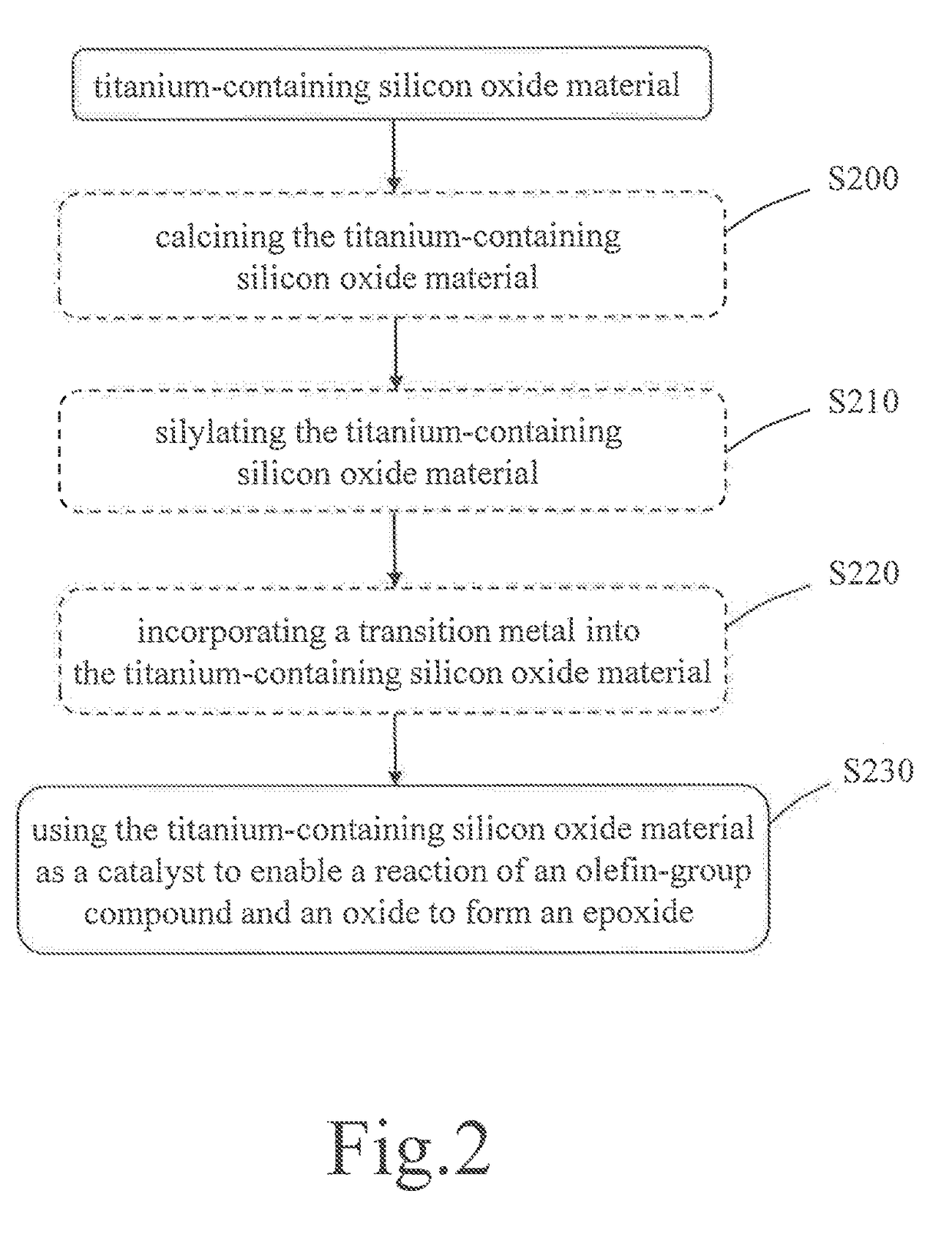Method for fabricating titanium-containing silicon oxide material and application of the same
- Summary
- Abstract
- Description
- Claims
- Application Information
AI Technical Summary
Benefits of technology
Problems solved by technology
Method used
Image
Examples
embodiment i
Fabrication of a Titanium-Containing Silicon Oxide Material:
[0039]Add 6.1 g tetraisopropylorhotitanate to 178.6 g isopropyl alcohol to form a first solution. Add 48.5 g silica gel (sourced from Sigma-Aldrich 236772) to the first solution, and mix them uniformly to form a second solution, wherein the silica gel has a pore diameter of 6 nm, a specific surface area of 500 m2 / g, and a particle diameter of 35-75 μm. Next, agitate the second solution at a temperature of 80° C. for 2 hours to obtain a first suspension. Next, filter the first suspension to remove the solvent and obtain a first powder. Next, dry the first powder at a temperature of 70° C. for less than 2 hours. Next, heat the dried first powder at a temperature rise rate of 3° C. / minute to a temperature of 500° C., and hold the first powder at the temperature of 500° C. for 5 hours to calcine the first powder. Next, let the first powder cool down naturally.
Fabrication of Propylene Epoxide:
[0040]Use 16.5 g titanium-containing...
embodiment ii
Fabrication of a Titanium-Containing Silicon Oxide Material:
[0041]The process for fabricating a titanium-containing silicon oxide material is the same as Embodiment I except Embodiment II is free of the calcination process.
Fabrication of Propylene Epoxide:
[0042]Use the titanium-containing silicon oxide fabricated in Embodiment II as the catalyst, and the succeeding process is the same as Embodiment I except Embodiment II does not undertake the silylation reaction of the catalyst. The result of the reaction is shown in Table. 1.
embodiment iii
Fabrication of a Titanium-Containing Silicon Oxide Material:
[0043]The process for fabricating a titanium-containing silicon oxide material is the same as Embodiment I except Embodiment III is free of the calcination process.
Fabrication of Propylene Epoxide:
[0044]Use the titanium-containing silicon oxide fabricated in Embodiment III as the catalyst, and the succeeding process is the same as Embodiment I. The result of the reaction is shown in Table. 1.
PUM
| Property | Measurement | Unit |
|---|---|---|
| Temperature | aaaaa | aaaaa |
| Temperature | aaaaa | aaaaa |
| Temperature | aaaaa | aaaaa |
Abstract
Description
Claims
Application Information
 Login to View More
Login to View More - R&D
- Intellectual Property
- Life Sciences
- Materials
- Tech Scout
- Unparalleled Data Quality
- Higher Quality Content
- 60% Fewer Hallucinations
Browse by: Latest US Patents, China's latest patents, Technical Efficacy Thesaurus, Application Domain, Technology Topic, Popular Technical Reports.
© 2025 PatSnap. All rights reserved.Legal|Privacy policy|Modern Slavery Act Transparency Statement|Sitemap|About US| Contact US: help@patsnap.com


